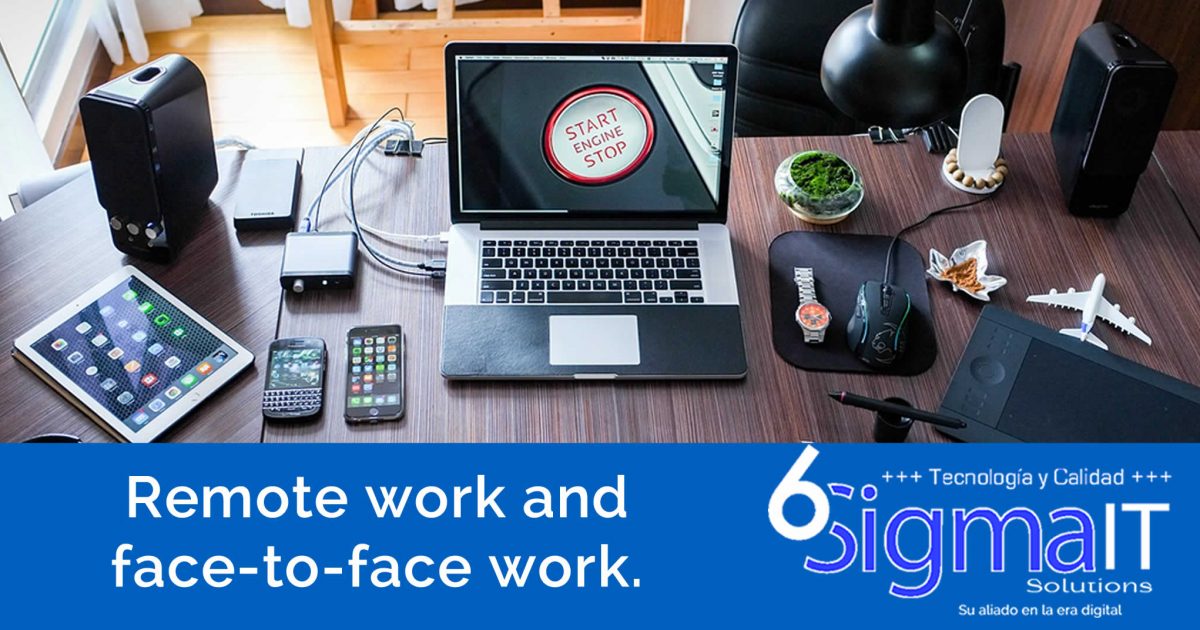
Trust, small businesses and global customers
18 October, 2018
What type of software license best suits your business?
24 August, 2019At present, with globalization, new business models, and current technology, there are two work modalities: remote work and face-to-face work.
Types of remote work and face-to-face work
In the modality of face-to-face work, there are employees and workers for the provision of services, which may have to be physically in the company’s facilities.
Remote workers are divided into teleworkers (employees of a company who work remotely and have social benefits), and remote freelance workers or for services that are not employees of a company.
It should be noted that remote work, has been implemented by large corporations with their employees (teleworking), I have colleagues in management positions in large corporations with team responsibility, working remotely with their team that is located in different parts of the world and they work remotely.
Working in the facilities is becoming obsolete since companies nowadays having workers in the offices are expensive, also services; employees in today’s large cities take a long time to travel. Remote jobs offer benefits to the worker since he can be at home taking care of his children while working.
Now with the 4th industrial revolution, and new jobs, many jobs that were previously done in person, are being done remotely by professionals in both modalities, telecommuting, and freelance, worldwide.
Characteristics of face-to-face work
- The employee works at a set time in the company’s facilities.
- The above implies a higher cost of paying the worker for his work.
- The company has at its disposal 100% of the time and assigns its tasks, and this theoretically should fulfill them.
- There is a “sensation” of productivity in the company, seeing the work in a job, believing that he is 100% fulfilling his activities.
- Higher cost for the company.
- You work locally (in a company).
Characteristics of remote work
- The employee performs the face-to-face work remotely with a computer from the place where the worker is.
- The worker organizes his time and fulfills activities, which leads to greater efficiency in the work.
- The company is not interested where the employee is, what matters is the results and compliance of the activities.
- It works globally,
- Lower cost for the company,
- The employer saves on physical space.
Generally, in remote jobs, you work for results many of them are not visitable and intangible (Example: a client can tell a programmer to make the change A to B, the client can perceive that the amendment involves making “some lines” of code, but due to the nature of the change, the programmer had to rewrite a large part of the program which has also involved much time.
That is why the remote worker must have a log of the activities he performs.
There are also thinking errors or paradigms in which companies fall about people who work remotely, which I will discuss in a subsequent publication.
Conclusions
I believe that most of the workers that will exist in the future will be remote since technology allows it. The world is going in that direction.
They also considered the face-to-face works would be exclusively for activities that require a physical presence in the company’s facilities.
With the 4th industrial revolution, many jobs that exist today will cease to exist and will replace new remote jobs that will exist in 5 to 10 years.
Finally, in some cases, the mixed work model (remote and face-to-face work) may be necessary depending on the type of work.
If you have any questions, do not hesitate to contact me by email, I will gladly assist you.
Until the next entry…



